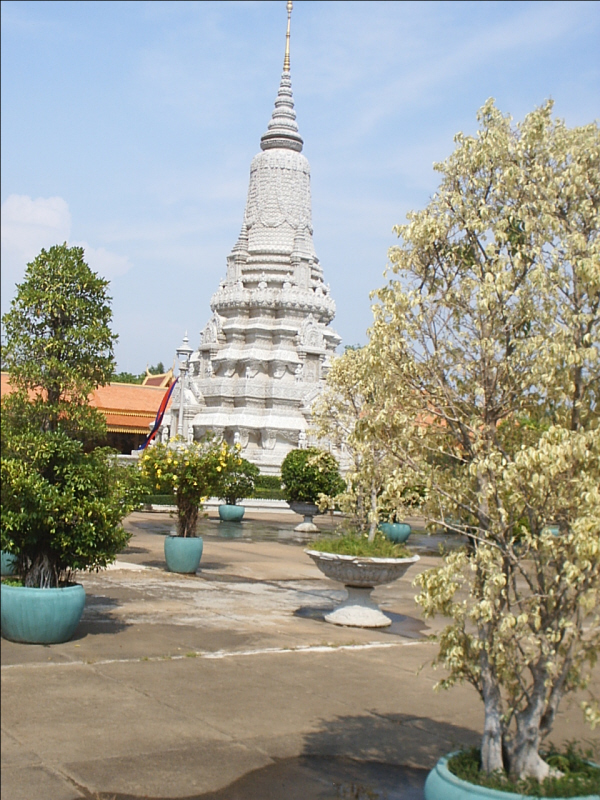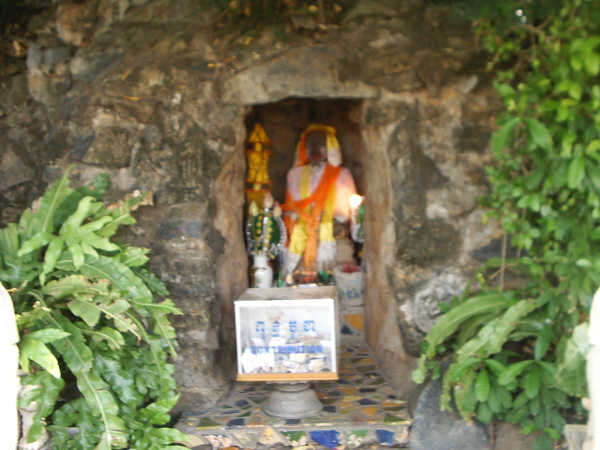| extra_vars1 | ||||||||||||||||||||||||||| |
|---|---|
| extra_vars2 | ||||||#7FC700||||||checked||||||||||||||||||||||||||||||||||||||||||||||||||||||||||||||||||||||||||| |


Phnom Penh (Khmer: ភ្នំពេញ, pronounced [pʰnum peːɲ] in Khmer and /pəˈnɒm ˈpɛn/ or /ˈnɒm ˈpɛn/ in English[2]) is the capital and largest city of Cambodia. Located on the banks of the Mekong River, Phnom Penh has been the national capital since the French colonized Cambodia, and has grown to become the nation's center of economic and industrial activities, as well as the center of security, politics, economics, cultural heritage, and diplomacy of Cambodia.
Once known as the “Pearl of Asia”, it was considered one of the loveliest French-built cities in Indochina[3] in the 1920s. Phnom Penh, along with Siem Reap and Sihanoukville, are significant global and domestic tourist destinations for Cambodia. Founded in 1434, the city is noted for its beautiful and historical architecture and attractions. There are a number of surviving French colonial buildings scattered along the grand boulevards.
Situated on the banks of the Tonlé Sap, Mekong and Bassac rivers, the Phnom Penh metropolitan area is home to more than 2 million of Cambodia’s population of over 14 million.[4] The city is the wealthiest and most populous city in Cambodia and is home to the country’s political hub.
PHNOM PENH (French Built City)
The capital of the Kingdom of Cambodia, Phnom Penh, is located at the confluence of three rivers - the Mekong, the Bassac and Tonle Sap. The city is divided into three sections - the north, an attractive residential area; the south or the French part of the city with its ministries, banks and colonial houses; and the centre or the heart with its narrow lanes, markets, foods stalls and shops.
Over the past four years, the city has undergone tremendous changes - businesses are springing up constantly and tourism is once again booming. Cambodia has one of the most liberal investment laws to further boost managed to retain its charm and character - cyclos that weave through traffic with ease, broad boulevards, old colonial buildings, parks and green spaces that reminds one of the country's French heritage, and above all its people who always have a smile for you.
| ||||||
댓글 0
| 번호 | 제목 | 글쓴이 | 조회 수 |
|---|---|---|---|
| 37 |
내기골프
| kimswed | 2668 |
| 36 |
압사라춤의진수
| kimswed | 3010 |
| 35 |
해외골프매너
| kimswed | 3482 |
| 34 |
캄보디아귀신
| kimswed | 3717 |
| 33 |
캄보디아불교현황
| kimswed | 6455 |
| 32 |
언니는미국/동생은한국
| kimswed | 2940 |
| 31 |
베트남에서캄보디아국경
| kimswed | 2403 |
| 30 |
크메르학살
| kimswed | 4900 |
| 29 |
캄퐁솜결혼
| kimswed | 2351 |
| 28 |
프놈펜8
| kimswed | 2945 |
| » |
phnompenh city
| kimswed | 3519 |
| 26 |
phnompenh central marker
| kimswed | 2239 |
| 25 |
메콩강기행
| kimswed | 4873 |
| 24 |
내고향-시아누크빌
| kimswed | 2539 |
| 23 |
아침식사<gundown>
| kimswed | 2296 |
| 22 |
캄보디아음식문화<gundown>
| kimswed | 2494 |
| 21 |
캄보디아야시장<gundown>
| kimswed | 1963 |
| 20 |
초대형물고기
| kimswed | 2498 |
| 19 |
라오스기행<kimjk10님의불로그:출처>
| kimswed | 1664 |
| 18 |
캄보디아정경
| kimswed | 1770 |
| 17 |
캄보디아여행기5
| kimswed | 2228 |
| 16 |
임신하면죽을대까지살아야
| kimswed | 2217 |
| 15 |
시골학교가이렇다
| kimswed | 2195 |
| 14 |
캄보디아/태국국경
| kimswed | 2098 |
| 13 |
앙코르사진전
| kimswed | 2178 |
| 12 |
여행후기56
| kimswed | 1568 |
| 11 |
아이들생활상
| kimswed | 1970 |
| 10 |
여성과어린이노동
| kimswed | 1579 |
| 9 |
전통춤
| kimswed | 2159 |
| 8 |
전통풍습
| kimswed | 2797 |


